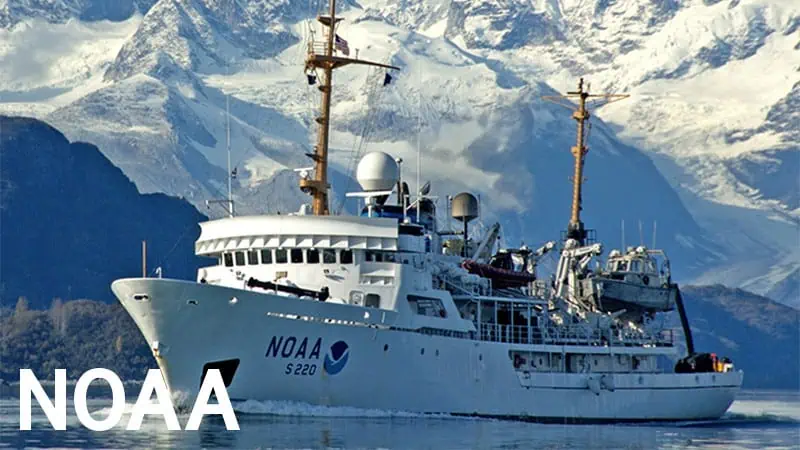NOAA will add two new ships to its fleet of groundbreaking research vessels. The agency selected Thoma-Sea Marine Constructors, LLC. for a $624.6 million contract to initially design and build two cutting-edge research vessels, with an option to purchase two more. The first two ships will be built in Houma, Louisiana, with an expected delivery date of 2027 and 2028.
The new ships will focus primarily on ocean mapping and nautical charting as part of NOAA’s mission to deliver tools and information to help mariners safely navigate the nation’s ports and harbors. Ships from around the world move $1.5 trillion worth of products in and out of U.S. ports every year and rely on navigation charts to do so safely. The new vessels will have additional capabilities to help assess and manage living marine resources and collect data for oceanographic monitoring, research and modeling activities.
“These state-of-the-art ships will ensure that we can continue to meet NOAA’s mission to support safe navigation, coastal resource management and the nation’s blue economy,” said NOAA Administrator Rick Spinrad, Ph.D. “I’m also proud that these new vessels will harness modern engines and design that will move NOAA forward in reducing its own emissions with an eye towards achieving a net-zero fleet.”
The ships will be designed to coordinate, acquire and process large data sets like those gathered from mapping the seafloor and characterizing marine habitats. They will also have the ability to deploy crewed survey work boats, scientific equipment and uncrewed systems, which enhance the work the ship does.
“This is another milestone in NOAA’s effort to recapitalize our aging fleet of ships,” said NOAA Corps Rear Adm. Nancy Hann, director of NOAA Marine and Aviation Operations and the NOAA Commissioned Officer Corps. “These ships are vital for mapping the United States Exclusive Economic Zone, enabling maritime commerce and responding to natural disasters, and will allow us to meet critical at-sea data collection requirements for the economic security, public safety and national security for many years to come.”
This contract was awarded following a request for proposals that was open June–October 2022.
The design and construction of these new ships is funded in part by the Inflation Reduction Act — a historic $3.3 billion investment to help communities, including tribes and vulnerable populations, prepare, adapt and build resilience to weather and climate events in pursuit of a climate-ready nation. The act also supports improvements to weather and climate data and services, and strengthens NOAA’s fleet of research airplanes and ships.
The research and survey ships operated, managed and maintained by NOAA Marine and Aviation Operations comprise the largest fleet of federal research ships in the nation. Ranging from large oceanographic research vessels capable of exploring the world’s deepest ocean, to smaller ships responsible for charting the shallow bays and inlets of the U.S. The fleet supports a wide range of marine activities, including fisheries surveys, nautical charting and ocean and climate studies. NOAA ships are operated by NOAA Corps officers and civilian professional mariners.













